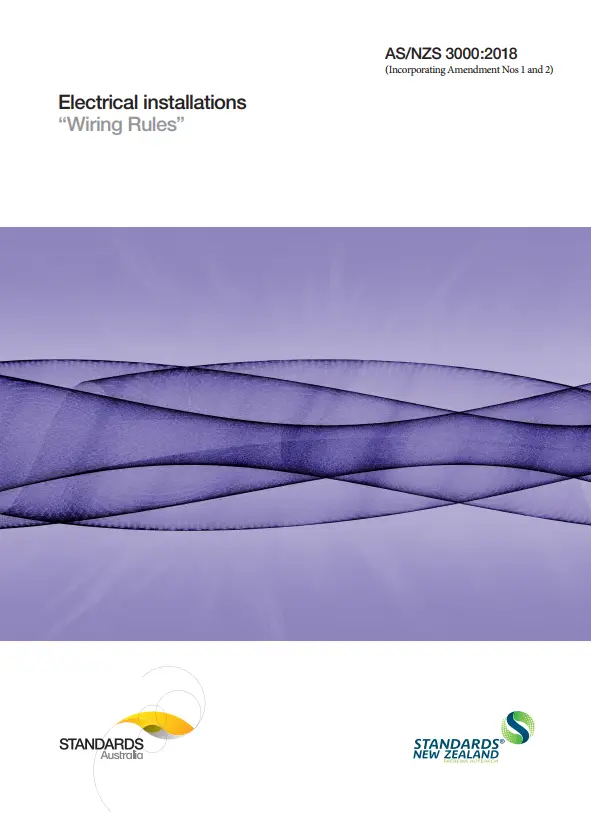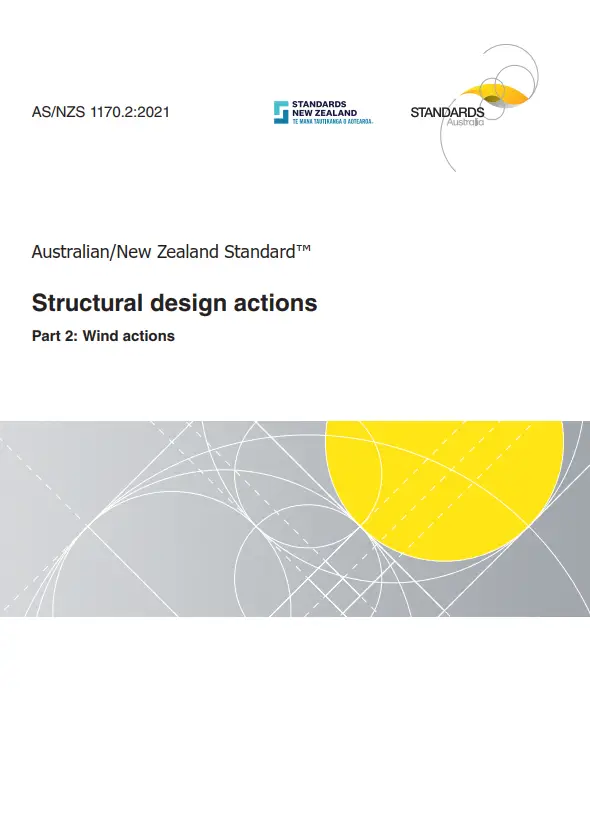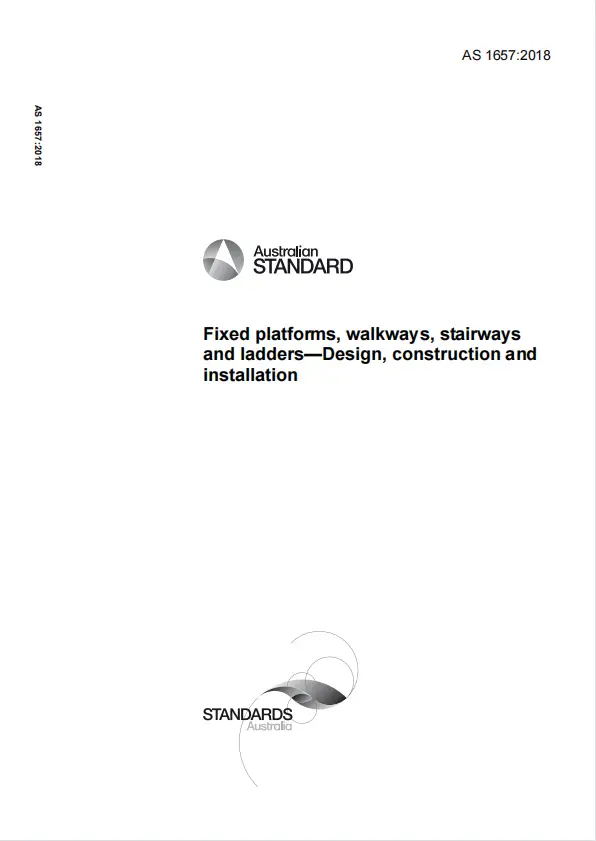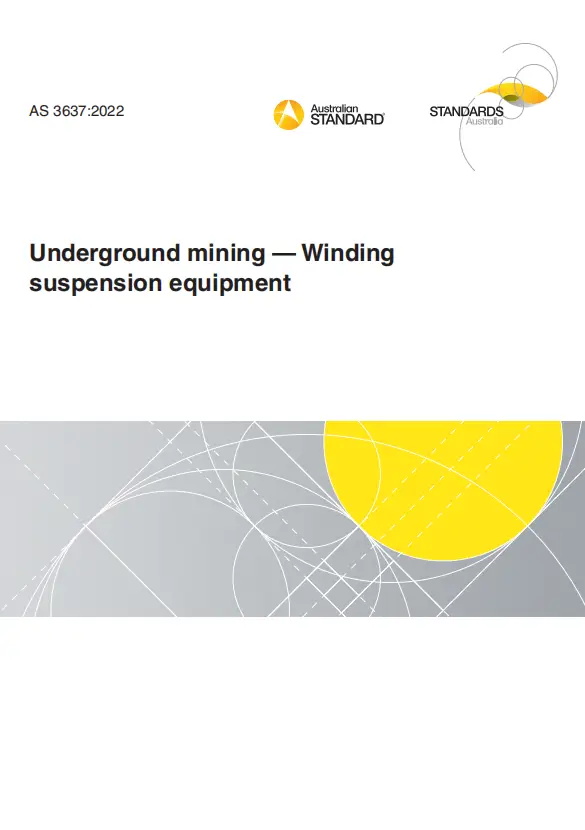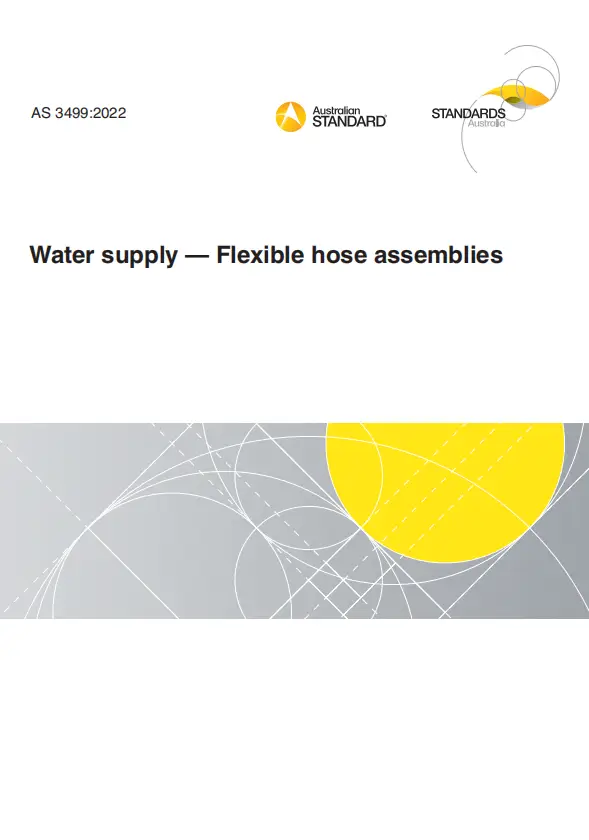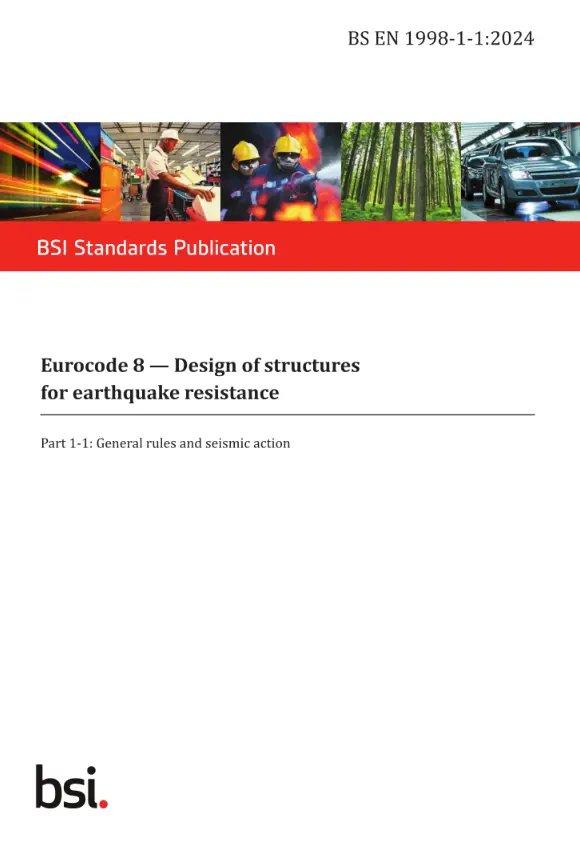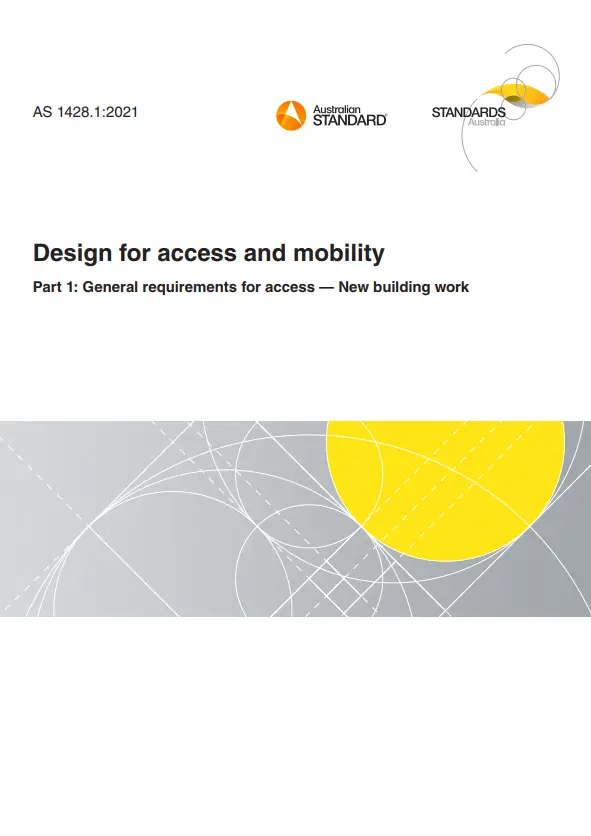Table of cotents
AS/NZS 3000:2018 ELECTRICAL INSTALLATIONS (KNOWN AS THE AUSTRALIAN/NEW ZEALAND WIRING RULES)
PREFACE
CONTENTS
LIST OF TABLES
LIST OF FIGURES
FOREWORD
SECTION 1 SCOPE, APPLICATION AND FUNDAMENTAL PRINCIPLES
1.1 SCOPE
1.2 APPLICATION
1.3 REFERENCED DOCUMENTS
1.4 DEFINITIONS
1.4.1 Application of definitions
1.4.2 Accessible
1.4.3 Accessible, readily
1.4.4 Accessory
1.4.5 Active (or active conductor)
1.4.6 Adjacent
1.4.7 Aerial conductor
1.4.8 Alteration
1.4.9 Appliance
1.4.10 Appliance, fixed
1.4.11 Appliance, hand-held
1.4.12 Appliance, portable
1.4.13 Appliance, stationary
1.4.14 Arc fault detection device (AFDD)
1.4.15 Area, hazardous
1.4.16 Arm™s reach
1.4.17 Authority, regulatory
1.4.18 Authorized person
1.4.19 Available, readily
1.4.20 Barrier
1.4.21 Cable
1.4.22 Cable, armoured
1.4.23 Cable core
1.4.24 Cable, flexible
1.4.25 Cable, mineral insulated metal sheathed (MIMS)
1.4.26 Cable, neutral-screened
1.4.27 Cable, sheathed
1.4.28 Ceiling, suspended
1.4.29 Circuit
1.4.30 Circuit-breaker
1.4.31 Class I equipment
1.4.32 Class II equipment
1.4.33 Class III equipment
1.4.34 Competent person
1.4.35 Conductor
1.4.36 Conductor, bare
1.4.37 Consumer mains
1.4.38 Contact, direct
1.4.39 Contact, indirect
1.4.40 Cord, flexible
1.4.41 Current, fault
1.4.42 Current, overload
1.4.43 Current, short-circuit
1.4.44 Damp situation
1.4.45 De-energized
1.4.46 Distribution board
1.4.47 Earthed
1.4.48 Earthed situation
1.4.49 Earth fault-loop impedance
1.4.50 Electrical equipment
1.4.51 Electrical fault
1.4.52 Electrical installation
1.4.53 Electrical installation, domestic
1.4.54 Electrical installation, multiple
1.4.55 Electrical installation, residential
1.4.56 Electric vehicle (EV)
1.4.57 Electricity distributor
1.4.58 Enclosure
1.4.59 Energized
1.4.60 Equipotential bonding
1.4.61 Explosive atmosphere
1.4.62 Exposed conductive part
1.4.63 Extraneous conductive part
1.4.64 Fault-current limiter
1.4.65 Fire mode
1.4.66 Functional earthing (FE)
1.4.67 Functional unit
1.4.68 Fuse
1.4.69 Informative
1.4.70 Ingress protection (IP) classification
1.4.71 Installation coupler
1.4.72 Insulated
1.4.73 Insulation system
1.4.74 Isolated
1.4.75 Isolation (Isolating function)
1.4.76 Lamp
1.4.77 Lift
1.4.78 Live
1.4.79 Live part
1.4.80 Luminaire (Light fitting)
1.4.81 Main earthing conductor
1.4.82 Main switch
1.4.83 Multiple earthed neutral (MEN) system
1.4.84 Neutral (Neutral conductor or mid-wire)
1.4.85 Neutral earthed system
1.4.86 Normative
1.4.87 Obstacle
1.4.88 Outbuilding-Individual
1.4.89 Outbuilding-Combined
1.4.90 Overcurrent
1.4.91 Plug
1.4.92 Point (in wiring)
1.4.93 Point of attachment
1.4.94 Point of entry
1.4.95 Point of supply
1.4.96 Protected extra-low voltage (PELV)
1.4.97 Protection, basic
1.4.98 Protection, fault
1.4.99 Protective earth neutral (PEN)
1.4.100 Protective earthing conductor
1.4.101 Repair
1.4.102 Residual current device (RCD)
1.4.103 Ripple-free d.c.
1.4.104 Safety service
1.4.105 Separated extra-low voltage (SELV)
1.4.106 Service protective device
1.4.107 Shall
1.4.108 Should
1.4.109 Socket, cord-extension
1.4.110 Socket-outlet
1.4.111 Socket-outlet-Multiple combination
1.4.112 Socket residual current device (SRCD)
1.4.113 Soft wiring
1.4.114 Source of supply
1.4.115 Subcircuit, final
1.4.116 Submains
1.4.117 Substation
1.4.118 Supply, alternative
1.4.119 Supply, normal
1.4.120 Supply, supplementary
1.4.121 Switchboard
1.4.122 Switchboard, main
1.4.123 Switchgear
1.4.124 Touch current
1.4.125 Touch voltage
1.4.126 Track system
1.4.127 Trunking, cable
1.4.128 Voltage
1.4.129 Wiring, catenary
1.4.130 Wiring enclosure
1.4.131 Wiring, equipment
1.4.132 Wiring, installation
1.4.133 Wiring systems
1.4.134 Wiring, underground
1.5 FUNDAMENTAL PRINCIPLES
1.5.1 Protection against dangers and damage
1.5.2 Control and isolation
1.5.3 Protection against electric shock
1.5.4 Basic protection
1.5.5 Fault protection
1.5.6 Additional protection by the use of RCDs
1.5.7 Basic and fault protection by use of extra-low voltage
1.5.8 Protection against thermal effects in normal service
1.5.9 Protection against overcurrent
1.5.10 Protection against earth fault currents
1.5.11 Protection against abnormal voltages
1.5.12 Protection against the spread of fire
1.5.13 Protection against injury from mechanical movement
1.5.14 Protection against external influences
1.6 DESIGN OF AN ELECTRICAL INSTALLATION
1.6.1 General
1.6.2 Supply characteristics
1.6.3 Maximum demand
1.6.4 Utilization voltage
1.6.5 Electrical installation circuit arrangement
1.7 SELECTION AND INSTALLATION OF ELECTRICAL EQUIPMENT
1.7.1 General
1.7.2 Installation work practice
1.7.3 Equipment selection
1.7.4 Damp situations
1.8 VERIFICATION (INSPECTION AND TESTING)
1.9 MEANS OF COMPLIANCE
1.9.1 Compliance with Part 2 of this Standard
1.9.2 Compliance with the requirements of other standards
1.9.3 Alterations and repairs
1.9.4 Compliance by specific design and installation
SECTION 2 GENERAL ARRANGEMENT, CONTROL AND PROTECTION
2.1 GENERAL
2.1.1 Application
2.1.2 Selection and installation
2.2 ARRANGEMENT OF ELECTRICAL INSTALLATION
2.2.1 Circuits
2.2.2 Maximum demand
2.2.3 Selection and installation of conductors
2.2.4 Operating characteristics of equipment
2.3 CONTROL OF ELECTRICAL INSTALLATION
2.3.1 General
2.3.2 Common control requirements
2.3.3 Main switches
2.3.4 Additional isolating switches
2.3.5 Emergency switching including emergency stopping
2.3.6 Shutting down for mechanical maintenance
2.3.7 Functional (control) switching
2.4 FAULT PROTECTION
2.4.1 General
2.4.2 Protection by automatic disconnection of supply
2.4.3 Types of devices
2.4.4 Auto-reclose devices
2.5 PROTECTION AGAINST OVERCURRENT
2.5.1 General
2.5.2 Devices for protection against both overload and short-circuit currents
2.5.3 Protection against overload current
2.5.4 Protection against short-circuit current
2.5.5 Protection against switchboard internal arcing fault currents
2.5.6 Coordination of overload and short-circuit protective devices
2.5.7 Reliability of supply
2.6 ADDITIONAL PROTECTION BY RESIDUAL CURRENT DEVICES
2.6.1 General
2.6.2 Selection and arrangement of devices
2.6.3 Additional protection by residual current devices
2.7 PROTECTION AGAINST OVERVOLTAGE
2.7.1 General
2.7.2 Protection by insulation or separation
2.7.3 Protection by protective devices
2.8 PROTECTION AGAINST UNDERVOLTAGE
2.8.1 General
2.8.2 Selection of protective device
2.9 PROTECTION AGAINST FIRE HAZARD DUE TO ARCING FAULTS
2.9.1 General
2.9.2 Type
2.9.3 Rating
2.9.4 Arrangement
2.9.5 Alterations
2.9.6 Final subcircuits in Australia
2.9.7 Final subcircuits in New Zealand
2.10 SWITCHBOARDS
2.10.1 General
2.10.2 Location of switchboards
2.10.3 Construction
2.10.4 Bars
2.10.5 Equipment identification
2.10.6 Wiring
2.10.7 Fire-protective measures
SECTION 3 SELECTION AND INSTALLATION OF WIRING SYSTEMS
3.1 GENERAL
3.1.1 Application
3.1.2 Selection and installation
3.2 TYPES OF WIRING SYSTEMS
3.3 EXTERNAL INFLUENCES
3.3.1 General
3.3.2 Particular influences
3.4 CURRENT-CARRYING CAPACITY
3.4.1 General
3.4.2 Operating temperature limits
3.4.3 Conductors in parallel
3.4.4 Coordination between conductors and protective devices
3.5 CONDUCTOR SIZE
3.5.1 General
3.5.2 Neutral conductor
3.5.3 Earthing conductor
3.6 VOLTAGE DROP
3.6.1 General
3.6.2 Value
3.6.3 Conductors in parallel
3.7 ELECTRICAL CONNECTIONS
3.7.1 General
3.7.2 Connection methods
3.7.3 Joints in cables
3.7.4 Installation couplers
3.8 IDENTIFICATION
3.8.1 General
3.8.2 Colour identification
3.8.3 Exceptions and special applications
3.9 INSTALLATION REQUIREMENTS
3.9.1 General
3.9.2 Methods of installation
3.9.3 Support and fixing
3.9.4 Protection against mechanical damage
3.9.5 Wiring systems installed vertically
3.9.6 Change of direction
3.9.7 Particular installation requirements
3.9.8 Prevention of mutual detrimental effects between services
3.9.9 Selection and installation to minimize the spread of fire
3.9.10 Limitation of circulating and eddy currents
3.9.11 Minimization of electromagnetic interference
3.10 ENCLOSURE OF CABLES
3.10.1 General
3.10.2 Wiring enclosures
3.10.3 Installation of wiring enclosures
3.11 UNDERGROUND WIRING SYSTEMS
3.11.1 Suitability and protection
3.11.2 Classification of wiring systems
3.11.3 Arrangements
3.11.4 Installation requirements
3.11.5 Spacing from other underground services
3.12 AERIAL WIRING SYSTEMS
3.12.1 Types of conductor
3.12.2 Arrangements
3.12.3 Clearances
3.12.4 Distance between supports (spans)
3.12.5 Aerial conductor supports
3.12.6 Poles and posts (including supports, struts and extensions to structures)
3.12.7 Joints and connections
3.13 CABLES SUPPORTED BY A CATENARY
3.13.1 Types of cables
3.13.2 Catenary supports
3.13.3 Clearances
3.14 SAFETY SERVICES
3.15 BUSWAYS, INCLUDING RISING MAINS SYSTEMS
3.16 EARTH SHEATH RETURN (ESR) SYSTEM
SECTION 4 SELECTION AND INSTALLATION OF ELECTRICAL EQUIPMENT
4.1 GENERAL
4.1.1 Application
4.1.2 Selection and installation
4.1.3 External influences
4.1.4 Adverse effects and interference
4.1.5 Air extraction systems
4.2 PROTECTION AGAINST THERMAL EFFECTS
4.2.1 General
4.2.2 Prevention of fire hazard
4.2.3 Protection against burns
4.3 CONNECTION OF ELECTRICAL EQUIPMENT
4.3.1 General
4.3.2 Direct connection
4.3.3 Installation wiring connected by an installation coupler(s)
4.3.4 Socket-outlets in installation wiring
4.3.5 Other connecting devices
4.3.6 Equipment wiring
4.4 SOCKET-OUTLETS
4.4.1 Types
4.4.2 Location
4.4.3 Earthing contacts
4.4.4 Switching device
4.4.5 Polarization and phase sequence
4.5 LIGHTING EQUIPMENT AND ACCESSORIES
4.5.1 Lampholders, including lampholders incorporated in a luminaire
4.5.2 Lamps and luminaires
4.6 SMOKE ALARMS
4.7 COOKING APPLIANCES
4.7.1 Switching device
4.7.2 Connection-New Zealand only
4.7.3 Clearance from open cooking surfaces
4.8 APPLIANCES PRODUCING HOT WATER OR STEAM
4.8.1 General
4.8.2 Water heaters
4.9 ROOM HEATERS
4.9.1 General
4.9.2 Isolating switches
4.9.3 Functional switches
4.10 ELECTRIC HEATING CABLES FOR FLOORS AND CEILINGS AND TRACE HEATING APPLICATIONS
4.10.1 General
4.10.2 Heating cables
4.10.3 Isolating switches
4.10.4 Functional switches
4.10.5 Additional protection
4.10.6 Signs
4.11 ELECTRIC DUCT HEATERS
4.12 ELECTRICITY CONVERTERS
4.12.1 General
4.12.2 Selection and installation
4.12.3 Control
4.12.4 Isolation
4.12.5 Overcurrent protection
4.12.6 Earthing
4.12.7 Neutral continuity
4.12.8 Electrical equipment connected to output
4.13 MOTORS
4.13.1 Protection against injury from mechanical movement
4.13.2 Protection against overload
4.13.3 Protection against overtemperature
4.14 TRANSFORMERS
4.14.1 General
4.14.2 Secondary circuit
4.14.3 Low voltage transformer supply
4.14.4 Autotransformers
4.14.5 Step-up transformers
4.15 CAPACITORS
4.15.1 General
4.15.2 Electrical equipment
4.15.3 Provision for discharge and control
4.16 ELECTRICAL EQUIPMENT CONTAINING LIQUID DIELECTRICS
4.16.1 General
4.16.2 Liquid dielectrics having a flashpoint not exceeding 250°C
4.17 BATTERIES
4.18 GAS APPLIANCES AND EQUIPMENT
4.18.1 Gas appliances
4.18.2 Gas cylinders containing heavier-than-air gases-Outdoors
4.18.3 Gas cylinders-Indoors-New Zealand only
4.18.4 Gas relief vent terminal-Natural gas, LP Gas or Biogas
4.18.5 Reticulated lighter-than-air gas system, metering system and regulators-New Zealand only
4.19 AIRCONDITIONING AND HEAT PUMP SYSTEMS
4.20 LIFTS
4.20.1 General
4.20.2 Lift supply arrangement
4.20.3 Labelling
4.20.4 Motor-room-less lifts (MRLs)
SECTION 5 EARTHING ARRANGEMENTS AND EARTHING CONDUCTORS
5.1 GENERAL
5.1.1 Application
5.1.2 Selection and installation
5.1.3 MEN earthing system
5.1.4 Other earthing systems
5.2 EARTHING FUNCTIONS
5.2.1 Protective earthing
5.2.2 Functional earthing (FE)
5.2.3 Earthing for combined protective and functional purposes
5.3 EARTHING SYSTEM PARTS
5.3.1 General
5.3.2 Earthing conductor material and type
5.3.3 Earthing conductor size (cross-sectional area)
5.3.4 Main earthing terminal/connection or bar
5.3.5 MEN connection
5.3.6 Earth electrodes
5.3.7 Functional earthing conductors
5.4 EARTHING OF EQUIPMENT
5.4.1 General
5.4.2 Socket-outlets
5.4.3 Lighting points
5.4.4 Luminaires
5.4.5 Conductive supports for aerial conductors
5.4.6 Structural metalwork including conductive building materials
5.4.7 Submersible pumps
5.4.8 Variable frequency devices
5.5 EARTHING ARRANGEMENTS
5.5.1 Main earthing conductor
5.5.2 Protective earthing conductors
5.5.3 Particular methods of earthing
5.5.4 Continuity
5.5.5 Installation
5.5.6 Connections
5.6 EQUIPOTENTIAL BONDING
5.6.1 General
5.6.2 Arrangement
5.6.3 Bonding conductors
5.7 EARTH FAULT-LOOP IMPEDANCE
5.7.1 General
5.7.2 Disconnection times
5.7.3 Earth fault-loop
5.7.4 Impedance
5.7.5 Supplementary equipotential bonding
5.8 OTHER EARTHING ARRANGEMENTS
SECTION 6 DAMP SITUATIONS
6.1 GENERAL
6.1.1 Application
6.1.2 Selection and installation
6.2 BATHS, SHOWERS AND OTHER FIXED WATER CONTAINERS
6.2.1 Scope
6.2.2 Classification of zones
6.2.3 Protection against electric shock-Prohibited measures
6.2.4 Selection and installation of electrical equipment
6.3 SWIMMING POOLS, PADDLING POOLS AND SPA POOLS OR TUBS
6.3.1 Scope
6.3.2 Classification of zones
6.3.3 Protection against electric shock
6.3.4 Selection and installation of electrical equipment
6.4 FOUNTAINS AND WATER FEATURES
6.4.1 Scope
6.4.2 Classification of zones
6.4.3 Protection against electric shock
6.4.4 Selection and installation of electrical equipment
6.5 SAUNAS
6.5.1 Scope
6.5.2 Classification of zones
6.5.3 Protection against electric shock
6.5.4 Selection and installation of electrical equipment
6.6 REFRIGERATION ROOMS
6.6.1 Scope
6.6.2 Protection against electric shock
6.6.3 Selection and installation of electrical equipment
6.7 SANITIZATION AND GENERAL HOSING-DOWN OPERATIONS
6.7.1 Scope
6.7.2 Classification of zone
6.7.3 Protection against electric shock
6.7.4 Selection and installation of electrical equipment
SECTION 7 SPECIAL ELECTRICAL INSTALLATIONS
7.1 GENERAL
7.1.1 Application
7.1.2 Selection and installation
7.2 SAFETY SERVICES
7.2.1 Scope and general
7.2.2 Supply systems
7.2.3 Main switchboard and switchgear
7.2.4 Main switches
7.2.5 Fire pumps and fire pump control equipment
7.2.6 Fire and smoke detection equipment and fire alarm systems
7.2.7 Air-handling systems
7.2.8 Evacuation equipment
7.2.9 Emergency lifts
7.2.10 Emergency motor-room-less lifts
7.3 ELECTRICITY GENERATION SYSTEMS
7.3.1 General
7.3.2 Selection and installation of system
7.3.3 Control
7.3.4 Isolation
7.3.5 Overcurrent protection
7.3.6 Earthing
7.3.7 Connected electrical equipment
7.3.8 Connection to electrical installation
7.4 PROTECTION BY ELECTRICAL SEPARATION (ISOLATED SUPPLY)
7.4.1 General
7.4.2 Source of supply
7.4.3 Arrangement of circuits
7.4.4 Switching devices
7.4.5 Supply to single item of electrical equipment
7.4.6 Supply to multiple items of electrical equipment
7.4.7 Variable speed drive (VSD) EMI filters
7.4.8 Testing
7.5 EXTRA-LOW VOLTAGE ELECTRICAL INSTALLATIONS
7.5.1 Scope
7.5.2 Application
7.5.3 Sources of supply to SELV and PELV systems
7.5.4 Separation requirements for SELV and PELV circuits
7.5.5 Arrangement of SELV circuits
7.5.6 Arrangement of PELV circuits
7.5.7 Voltage drop in conductors
7.5.8 Control of an electrical installation
7.5.9 Overcurrent protection
7.5.10 Connecting devices
7.5.11 Wiring systems
7.5.12 Testing
7.6 HIGH VOLTAGE ELECTRICAL INSTALLATIONS
7.6.1 Scope
7.6.2 Application
7.6.3 Issues relevant to high voltage installations
7.7 HAZARDOUS AREAS (EXPLOSIVE GAS OR COMBUSTIBLE DUSTS)
7.7.1 Scope
7.7.2 Classification of hazardous areas
7.8 STANDARDS FOR SPECIFIC ELECTRICAL INSTALLATIONS
7.8.1 Scope
7.8.2 Standards containing requirements that are additional to, replace, or modify the general requirements of this Standard
7.8.3 Standards containing guidance
7.9 SUPPLIES FOR ELECTRIC VEHICLES (NZ ONLY)
7.9.1 Scope
7.9.2 Supply (NZ only)
7.9.3 Domestic electrical installations (NZ only)
7.9.4 Other electrical installations (NZ only)
SECTION 8 VERIFICATION
8.1 GENERAL
8.1.1 Application
8.1.2 General requirements
8.1.3 Periodic inspection and testing
8.2 VISUAL INSPECTION
8.2.1 General
8.2.2 Checklist
8.3 TESTING
8.3.1 General
8.3.2 Test methods
8.3.3 Mandatory tests
8.3.4 Sequence of tests
8.3.5 Continuity of the earthing system
8.3.6 Insulation resistance
8.3.7 Polarity and correct circuit connections
8.3.8 ‘Text deleted’
8.3.9 Verification of earth fault-loop impedance (EFLI)
8.3.10 Operation of RCDs
8.4 VERIFICATION RECORDS
APPENDIX A – REFERENCED DOCUMENTS
APPENDIX B – CIRCUIT PROTECTION GUIDE
B1 SCOPE
B2 CIRCUIT ARRANGEMENTS
B3 PROTECTION AGAINST OVERCURRENT
B3.1 General
B3.2 Coordination between conductors and overload protective devices
B4 PROTECTION BY AUTOMATIC DISCONNECTION OF SUPPLY
B4.1 Application
B4.2 Principle
B4.3 Disconnection times
B4.4 The earth fault-loop
B4.5 Calculation of earth fault-loop impedance
B4.6 Earth fault-loop impedance measurement
B5 MAXIMUM CIRCUIT LENGTHS
B5.1 General
B5.2 Calculation of maximum length of circuit
APPENDIX C – CIRCUIT ARRANGEMENTS
C1 SCOPE
C2 MAXIMUM DEMAND
C2.1 After diversity maximum demand
C2.2 Calculation of maximum demand in consumer mains and submains
C2.3 Domestic installations
C2.4 Non-domestic installations
C2.5 Maximum demand in final subcircuits
C3 SIMPLIFIED PROTECTIVE DEVICE SELECTION
C4 SIMPLIFIED VOLTAGE DROP
C4.1 Background
C4.2 Examples
C5 NUMBER OF POINTS CONNECTED TO CIRCUITS
C5.1 Number of circuits
C5.2 Final subcircuits
C6 GUIDE TO MAXIMUM NUMBER OF CABLES INSTALLED IN CONDUITS
C6.1 General
C6.2 Basis of calculations
C6.3 Application notes
APPENDIX D – MINIMUM SIZES OF POSTS, POLES AND STRUTS FOR AERIAL LINE CONDUCTORS
D1 APPLICATION
D1.1 General
D1.2 Using the tables in this Appendix
D2 GENERAL REQUIREMENTS FOR POSTS AND POLES
D2.1 Sinking of posts/poles in ground
D2.2 Timber posts/poles
D2.3 Steel-pipe posts/poles
D3 ATTACHMENTS TO BUILDINGS OR STRUCTURES
D3.1 Responsibility for design
D3.2 Horizontal and vertical struts
D4 EXAMPLE USING THE TABLES TO DETERMINE POLE/ POST OR STRUT SIZE
D4.1 Problem
D4.2 Solution
APPENDIX E – ELECTRICAL INSTALLATION REQUIREMENTS IN NATIONAL CONSTRUCTION CODES
E1 SCOPE
E2 AUSTRALIA
E2.1 General
E2.2 Principles of classification
E2.3 Provisions in the NCC
E3 NEW ZEALAND
E3.1 General
E3.2 Extent of electrical installations in the NZBC
E3.3 Building consents
APPENDIX F – SURGE PROTECTION DEVICES
F1 SURGE PROTECTIVE DEVICES (SPDs)
F1.1 General
F1.2 Selection and installation of SPDs
F2 SURGE PROTECTIVE EARTHING AND BONDING
APPENDIX G – DEGREES OF PROTECTION OF ENCLOSED EQUIPMENT
APPENDIX H – WS CLASSIFICATION OF WIRING SYSTEMS
H1 GENERAL
H1.1 Classification
H1.2 Designation
H1.3 First characteristic numeral
H1.4 Second characteristic numeral
H1.5 Supplementary letter W
H1.6 Supply and installation
H2 PARTICULAR WIRING SYSTEM APPLICATIONS
H2.1 Building Code
H2.2 Equipment installation Standards
H3 FIRE-PROTECTED WIRING SYSTEMS
H4 MECHANICALLY PROTECTED WIRING SYSTEMS
H4.1 General
H4.2 Application of wiring systems
H4.3 Unenclosed wiring systems
H4.4 Enclosed wiring systems
H5 GUIDE TO MECHANICAL PROTECTION CLASSIFICATION
H5.1 General
H5.2 WSX1 mechanical protection systems
H5.3 WSX2 mechanical protection systems
H5.4 WSX3 mechanical protection systems
APPENDIX I – PROTECTIVE DEVICE RATINGS AND METRIC EQUIVALENT SIZES FOR IMPERIAL CABLES USED IN ALTERATIONS AND REPAIRS
I1 SCOPE
I2 PROTECTIVE DEVICE RATINGS
I3 METRIC EQUIVALENT SIZES FOR IMPERIAL CONDUCTORS
APPENDIX J – SYMBOLS USED IN THIS STANDARD
APPENDIX K – SWITCHBOARD REQUIREMENT SUMMARY
K1 GENERAL
K1.1 Introduction
K1.2 Deemed to comply
K2 SWITCHBOARD STANDARDS
K2.1 General
K2.2 Withdrawal date of the AS/NZS 3439 series
K2.3 Testing
K3 APPLICATION OF THE AS/NZS 61439 SERIES
K3.1 General rules
K3.2 Power switchgear and controlgear (PSC)
K3.3 Distribution boards intended to be operated by ordinary persons (DBO)
K4 GUIDELINES FOR THE ASSESSMENT OF SWITCHBOARDS
K4.1 User template
K4.2 Items subject to agreement
K4.3 Design verification
K5 CORRESPONDING PROVISIONS OF THIS STANDARD AND THE AS/NZS 61439 SERIES
K6 PARTICULAR CLAUSES RELEVANT TO THIS STANDARD
K6.1 Degree of protection of ASSEMBLIES
K6.2 Form of internal separation
K6.3 Clearance
K6.4 Overvoltage category
K6.5 Creepage
K6.6 Earthing (protective earth circuit)
K6.7 Dielectric tests for protection against electric shock
K6.8 Current rating by testing and temperature limits
K6.9 Derivation of ratings for similar variants to AS/NZS 61439.1
K6.10 Verification assessment to AS/NZS 61439.1
K7 SHORT-CIRCUIT WITHSTAND STRENGTH
K7.1 General
K7.2 Ratings
K7.3 Short-circuit withstand strength by comparison to a reference design utilizing a check list
K8 MARKING
K8.1 PSC and DBO switchboards
K8.2 Additional marking for DBO
K9 OTHER RELEVANT CHARACTERISTICS TO BE DECLARED BY THE ASSEMBLY MANUFACTURER
K10 DEVICE SUBSTITUTION
K10.1 General
K10.2 Device substitution questions
K11 REPAIRS TO EXISTING SWITCHBOARDS
K12 ROUTINE VERIFICATION BY THE SWITCHBOARD MANUFACTURER
APPENDIX L – (Deleted)
APPENDIX M – REDUCING THE IMPACT OF POWER SUPPLY OUTAGES—CONTINUITY OF SUPPLY FOR ACTIVE ASSISTED LIVINGAND HOMECARE MEDICAL SITUATIONS
M1 GENERAL
M1.1 Scope
M1.2 Active assisted living
M1.3 Homecare medical
M2 ARRANGEMENTS
APPENDIX N – ELECTRICAL CONDUITS
N1 GENERAL
N2 MARKING OF AS/NZS 2053 SERIES AND AS/NZS 61386 SERIES CONDUITS
N3 CLASSIFICATIONS
APPENDIX O – INSTALLATION OF ARC FAULT DETECTION DEVICES (AFDDs)
O1 GENERAL
O2 CHARACTERISTICS OF AFDDs
O3 GENERAL REQUIREMENTS FOR AFDDs
O4 LOCATION, SELECTION AND INSTALLATION OF AFDDs
O4.1 Location
O4.2 Selection of AFDDs
O4.3 Installation
O4.4 Overvoltage protection
APPENDIX P – GUIDANCE FOR INSTALLATION AND LOCATION OF ELECTRICAL VEHICLE SOCKET-OUTLETS AND CHARGING STATIONS
P1 SCOPE AND GENERAL
P1.1 Scope
P1.2 Applications
P1.3 Additional requirements and tests
P1.4 Exclusions
P1.5 Definitions
P2 MAXIMUM DEMAND
P3 INSTALLATION
P3.1 General
P3.2 External Influences
P4 DEVICES FOR PROTECTION AGAINST INDIRECT CONTACT BY AUTOMATIC DISCONNECTION OF SUPPLY
P4.1 RCDs
P4.2 Devices for protection against overcurrent
P4.3 Protective conductors
P5 OTHER EQUIPMENT
P5.1 Socket-outlets and vehicle connectors
P5.2 Ratings of vehicle couplers, socket-outlets and plugs
P5.3 Permitted socket-outlets or vehicle connectors
P5.4 Types of connection
P6 CHARGING STATIONS AND CABLES
P7 PERIODIC VERIFICATION
APPENDIX Q – D.C. CIRCUIT PROTECTION APPLICATION GUIDE
Q1 SCOPE
Q2 GENERAL
Q3 ARC SUPPRESSION
Q4 SWITCHGEAR TYPES
Q4.1 Polarized
Q4.2 Non-polarized type
Q5 D.C. RATINGS
Q5.1 General
Q5.2 Earthed D.C. supply
Q6 PROVISION OF ISOLATION AND OVERCURRENT PROTECTION
Q7 SWITCHBOARD LOCATIONS
Q8 FINAL SUBCIRCUIT WIRING AND FITTINGS
Q9 INVERTERS
INDEX

